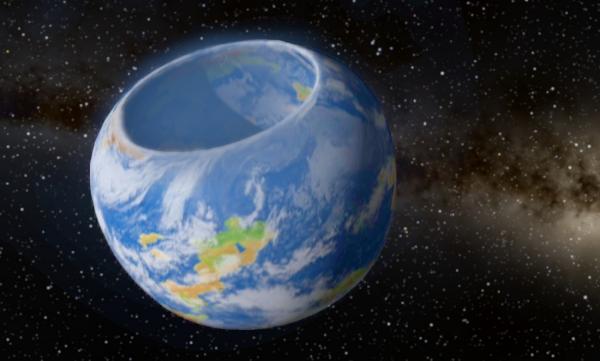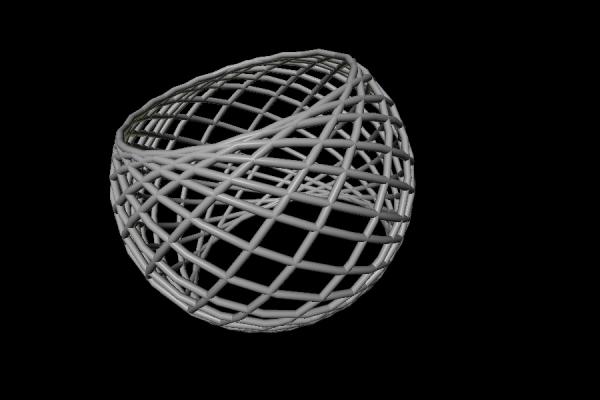BY LETTER
Symmes' Worlds
Technology > Technology Levels > High Tech / Hitech
Technology > Application > Infrastructure
Technology > Application > Megascale Engineering
Technology > Application > Infrastructure
Technology > Application > Megascale Engineering
Hollow Worlds | |
 Image from Steve Bowers | |
| Most Symmes' world have large openings in the shell (often at the poles) which allow the atmospheres, hydrospheres and biospheres of the outside surface and inside volume to mix. | |
Gravity on the outside of the shell is normal to the surface, but decreases somewhat towards the edge of the holes. Inside the object there is negligible gravity, and a freefall ecology can be set up inside. External light can only penetrate the central atmosphere to a limited extent, so artificial suns known as lumieres are usually included, anchored by polyfullerene cables running to the shell. These cables can also act as anchoring for cities and ecologies along their length. Some smaller Symmes' worlds are illuminated by a system of mirrors suspended over the poles, but the light from such sources only penetrates a few hundred kilometres into the gloom.
The weather system of a Symmes' World is made more complex by the different day/night cycles of the outside and inside. On the outside one half is always lit by the local sun while on the inside all of the volume is lit by the luminaire for half the time. Waste heat (heavy industry use may be timed to use the surplus energy made available with the cyclic luminaire shutdown) and the remote locations of the connecting Symmes' holes complicate airflow patterns.
 Image from Steve Bowers | |
| Diagram showing the interior arrangement of dynamic orbital rings that supports the surface structure of a Symmes world. | |
Because a Symmes' World uses mass to generate gravity effects when more 'matter efficient' means can be used they are not popular in most polities. However the MPA has built some for artistic reasons and the Red Star 'M'pire makes such shells do 'double duty' by building them of computronium.
 Image from Steve Bowers |
Related Articles
Appears in Topics
Development Notes
Text by AI Vin
Initially published on 24 July 2004.
Initially published on 24 July 2004.






